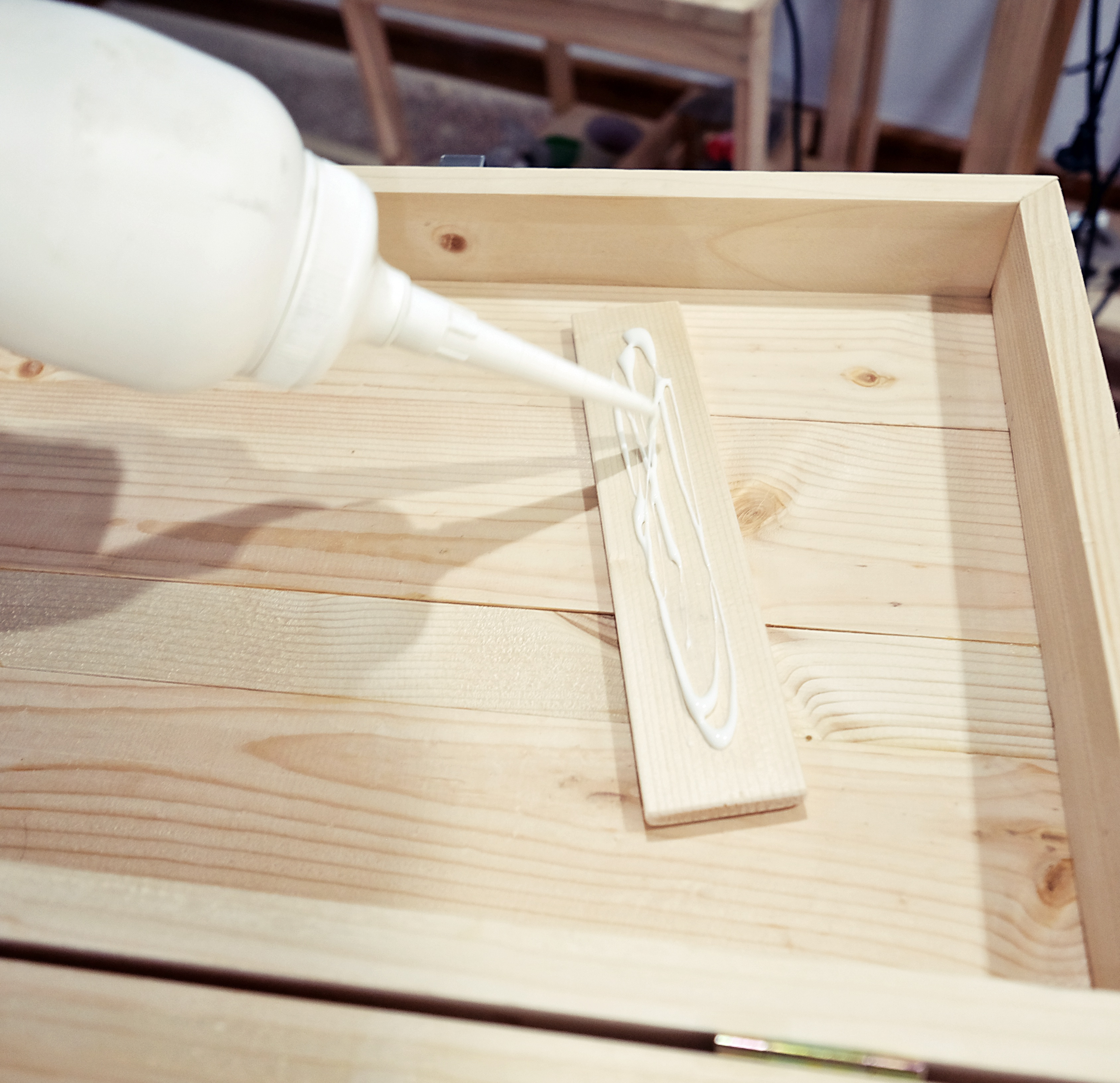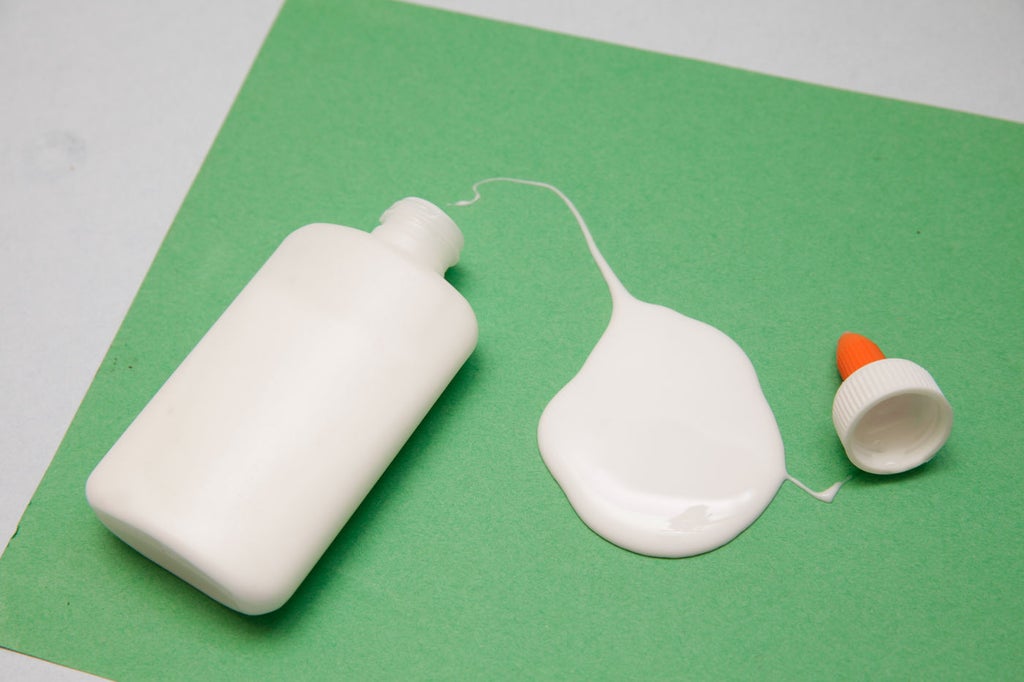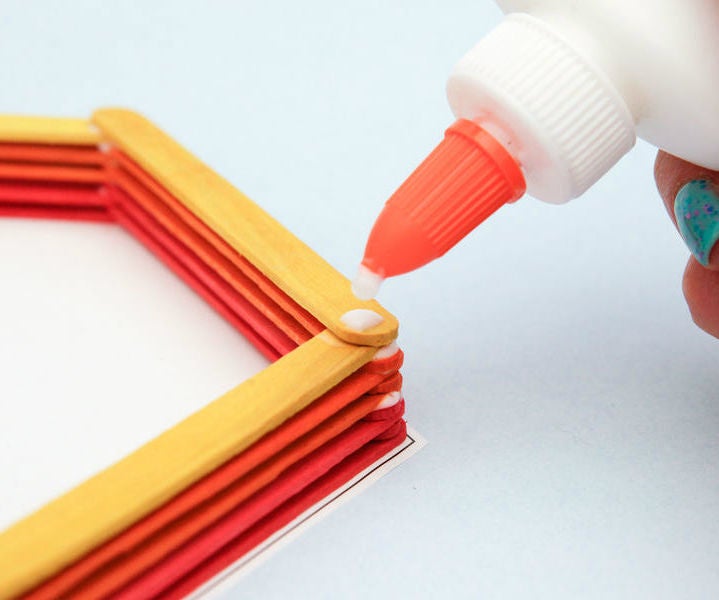White glue works by drying and forming a strong bond when the water evaporates. The glue particles link together, creating a sturdy adhesive.
White glue, also known as PVA glue, is a versatile adhesive used in various crafting and DIY projects. It is water-based and safe for children to use. White glue is commonly used in schools, homes, and offices due to its ease of application and non-toxic nature.
Whether you are working on a school project or a homemade craft, white glue is a reliable and effective adhesive to have on hand. Let’s delve deeper into how white glue works and its practical applications in different projects.

Contents
Introduction To White Glue
White glue, also known as school glue or PVA glue, works by forming a strong adhesive bond when it dries. The glue contains a polymer emulsion that binds together the materials being glued. This type of glue is commonly used for arts and crafts projects, as well as for general household repairs.
White glue, also known as school glue or Elmer’s glue, is a popular adhesive used in various industries and households. It is a water-based adhesive that is easy to use and dries clear.
The glue is made up of a polymer called polyvinyl acetate (PVA) and other additives that give it its unique properties. In this blog post, we will explore the basics of how white glue works and its common uses.
The Basics
White glue works by creating a strong bond between two surfaces. When the glue is applied to a surface, the water in the glue evaporates, leaving behind a thin layer of PVA. The PVA then reacts with the air to form a strong and flexible bond.
The bond becomes stronger as the glue dries and hardens. One of the benefits of white glue is that it is non-toxic and safe to use. It is also easy to clean up with water when wet.
However, it is important to note that the bond created by white glue is not as strong as other types of adhesives like super glue or epoxy.
Common Uses
White glue is commonly used in schools, offices, and households for various purposes. Here are some common uses of white glue:
- Arts and crafts projects
- Scrapbooking
- Paper mache
- Woodworking
- Bookbinding
White glue is also used in the construction industry for bonding materials like drywall, wallpaper, and ceiling tiles. It is an affordable and easy-to-use alternative to other adhesives.
In conclusion, white glue is a versatile adhesive that is easy to use and safe. Its unique properties make it an ideal adhesive for various applications. Whether you’re a student, an artist, or a DIY enthusiast, white glue is a must-have in your toolbox.
The Chemistry Behind White Glue
White glue, also known as polyvinyl acetate (PVA) glue, is a versatile adhesive commonly used in school projects, crafts, and woodworking. But have you ever wondered how this seemingly simple substance works at a molecular level? Let’s delve into the fascinating chemistry behind white glue.
Key Ingredients
White glue consists primarily of polyvinyl acetate, water, and small amounts of other chemicals such as plasticizers and preservatives. The polyvinyl acetate serves as the main adhesive component, forming the basis of the glue’s bonding properties.
Polymerization Process
The polymerization process is integral to how white glue works. When the white glue is applied, the water in the glue begins to evaporate, causing the polyvinyl acetate molecules to come into closer contact.
As the molecules approach each other, they undergo a polymerization reaction, forming long chains of polymers. These polymer chains then intertwine with one another, creating a strong, flexible bond as the glue dries.
Types Of White Glue
White glue, also known as PVA (polyvinyl acetate) glue, is a versatile adhesive used for various crafting, woodworking, and school projects. Understanding the different types of white glue can help you choose the right one for your specific needs.
Pva Glue
PVA glue, the most common type of white glue, is known for its strong bonding properties. It is widely used in woodworking, carpentry, and general household repairs. PVA glue is also popular among crafters for its ability to bond porous materials like wood, paper, and fabric.
School Glue Varieties
When it comes to school projects and arts and crafts, various varieties of white glue are available, including washable white glue, clear white glue, and gel white glue. These varieties offer different consistencies and drying times, catering to the specific requirements of different projects.
Adhesion Mechanism
White glue works through an adhesion mechanism, where its sticky properties allow it to bond materials together. The glue forms a strong bond as it dries, creating a secure and long-lasting attachment.
How Glue Bonds With Surfaces
White glue creates a bond by forming a physical connection between the glue and the surface.
The glue molecules interact with the molecules of the surface, creating a strong adhesive bond.
Factors Affecting Adhesion
- Surface roughness
- Cleanliness of the surface
- Pressure applied during bonding
- Temperature and humidity
The Role Of Water
When it comes to understanding how white glue works, one of the key factors to consider is the role of water. Water plays a vital role in the functionality of white glue, acting as both a solvent and facilitator in the drying and curing process.
Solvent Properties
White glue, also known as polyvinyl acetate (PVA) glue, contains water as its primary solvent. Solvents are substances that can dissolve other substances, and in the case of white glue, water acts as the solvent that helps break down the PVA particles and make the glue spreadable.
The water in white glue works by weakening the intermolecular forces between the PVA molecules, allowing them to move more freely. This makes the glue easier to apply and spread onto surfaces. The water also helps to keep the glue in a liquid state, preventing it from drying out prematurely.
Drying And Curing Process
Once the white glue is applied to a surface, the water begins to evaporate. As the water evaporates, the glue undergoes a drying and curing process. This process involves the transformation of the liquid glue into a solid adhesive bond.
As the water molecules evaporate, the PVA particles come into closer contact with one another. This triggers a chemical reaction within the glue, known as polymerization, where the PVA molecules link together to form long chains. These chains create a strong and durable bond between the surfaces being glued.
During the drying and curing process, the water also helps to regulate the rate of evaporation. If the glue dries too quickly, it may not have enough time for the polymerization process to occur fully, resulting in a weaker bond.
Conversely, if the glue dries too slowly, it can lead to extended drying times and prolonged waiting periods for the glue to fully set. By understanding the role of water in the white glue formulation, we can appreciate its importance in ensuring proper adhesion and the successful bonding of various materials.
The solvent properties of water aid in making the glue spreadable, while its involvement in the drying and curing process helps create a strong and lasting bond.
Strength And Durability
White glue works by forming a strong bond when it dries, providing strength and durability to the materials it adheres to. The adhesive properties of white glue create a lasting connection between surfaces, making it a reliable choice for various crafting and DIY projects.
Strength and Durability: How Does White Glue Work White glue, also known as school glue or PVA glue, is a popular adhesive used in various applications. It is made from polyvinyl acetate, a synthetic polymer that forms a strong and durable bond between two surfaces.
The strength and durability of white glue depend on several factors, including the type of surfaces being bonded, the amount of glue used, and the environment in which the bond will be exposed.
Factors Influencing Strength
The strength of the bond created by white glue is influenced by several factors, including the type of surfaces being bonded, the amount of glue used, and the environment in which the bond will be exposed. When bonding two surfaces, it is essential to ensure that the surfaces are clean and dry to allow the glue to adhere correctly.
The amount of glue used also plays a crucial role in the strength of the bond. Applying too little glue may result in a weak bond, while applying too much may cause the bond to break due to excess glue.
Comparing With Other Adhesives
White glue is a versatile adhesive that offers several advantages over other adhesives. Unlike some adhesives that emit strong fumes and require ventilation, white glue is non-toxic and safe to use. It is also water-soluble, making it easy to clean up with water.
Additionally, white glue dries clear, making it ideal for use in applications where appearance is important, such as in arts and crafts. In conclusion, white glue is a versatile adhesive that offers a strong and durable bond between two surfaces.
Its strength and durability depend on several factors, including the type of surfaces being bonded, the amount of glue used, and the environment in which the bond will be exposed. Compared to other adhesives, white glue is non-toxic, water-soluble, and dries clear, making it an ideal choice for various applications.
Safety And Environmental Considerations
When using white glue, it’s important to consider the safety and environmental impact of this commonly used adhesive. Understanding the toxicity levels, biodegradability, and recycling potential of white glue is crucial for making informed decisions about its use.
Toxicity Levels
White glue is generally considered to have low toxicity levels, making it safe for use in various applications. This adhesive is formulated to be non-toxic, posing minimal risk to human health and the environment.
However, it’s essential to use white glue in a well-ventilated area and avoid direct skin contact to prevent any potential irritation.
Biodegradability And Recycling
One of the notable environmental advantages of white glue is its biodegradability. When disposed of, white glue can break down naturally over time, reducing its impact on landfills and ecosystems.
Additionally, some types of white glue can be recycled through specialized programs, contributing to sustainable waste management practices.

Creative And Unusual Uses
White glue, also known as PVA glue, is a versatile adhesive that is commonly used in arts and crafts, as well as for DIY repairs.
But did you know that white glue can be used in creative and unusual ways beyond its traditional applications? In this blog post, we will explore some innovative uses of white glue that you may not have considered before.
Arts And Crafts
White glue is a staple in the world of arts and crafts, where it is primarily used for bonding paper, cardboard, and other porous materials. However, this versatile adhesive can also be utilized for creating unique textures and effects in art projects.
By mixing white glue with acrylic paint or adding it to homemade clay, artists can achieve interesting 3D effects and textures that add depth and dimension to their creations.
Diy Repair Hacks
When it comes to DIY repairs, white glue is not just limited to bonding wood, plastic, and other materials. It can also be used as a filler for small cracks and holes in various surfaces.
By mixing white glue with sawdust or baking soda, it forms a strong and durable paste that can be used to patch up minor imperfections in wood, ceramics, and even stone surfaces.
Frequently Asked Questions
How Does White Glue Stick?
White glue sticks by drying out and forming a strong bond when the water evaporates. The glue’s polymers create a mesh-like structure that holds the bonded surfaces together.
What Materials Does White Glue Bond With?
White glue bonds with a variety of materials including paper, wood, fabric, and some plastics. Its adhesive properties make it suitable for a wide range of crafting and DIY projects.
What Are The Disadvantages Of White Glue?
The disadvantages of white glue are that it takes time to dry, can be messy, and may not work well on certain materials. It also has a tendency to become brittle over time, making it less effective as an adhesive.
How Long Does White Glue Take To Set?
White glue typically takes about 20-30 minutes to set completely. It is best to allow it to dry overnight for maximum strength.
Conclusion
Understanding how white glue works is essential for successful crafting projects. With its adhesive properties, white glue binds materials effectively.
By creating a strong bond, white glue ensures durability in various applications. So, next time you reach for white glue, remember its simple yet powerful mechanism at work.

